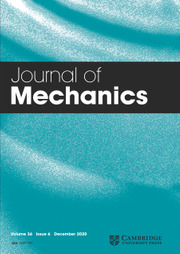Article contents
Response Prediction and Dynamic Substructuring for Coupled Structures in the Frequency Domain
Published online by Cambridge University Press: 23 October 2020
Abstract
To evaluate the dynamic properties of a coupled structure based on the dynamic properties of its substructures, this paper investigates the dynamic substructuring issue from the perspective of response prediction. The main idea is that the connecting forces at the interface of substructures can be expressed by the unknown coupled structural responses, and the responses can be solved rather easily. Not only rigidly coupled structures but also resiliently coupled structures are investigated. In order to further comprehend and visualize the nature of coupling problems, the Neumann series expansion for a matrix describing the relation between the coupled and uncoupled substructures is also introduced in this paper. Compared with existing response prediction methods, the proposed method does not have to measure any forces, which makes it easier to apply than the others. Clearly, the frequency response function matrix of coupled structures can be derived directly based on the response prediction method. Compared with existing frequency response function synthesis methods, it is more straightforward and comprehensible. Through demonstration of two examples, it is concluded that the proposed method can deal with structural coupling problems very well.
Keywords
Information
- Type
- Research Article
- Information
- Copyright
- Copyright © 2020 The Society of Theoretical and Applied Mechanics
References
REFERENCES
- 1
- Cited by

